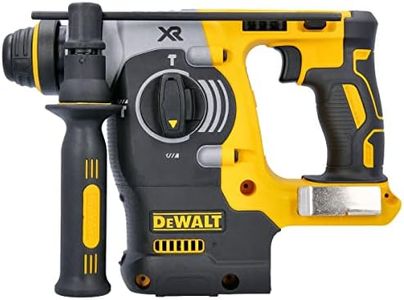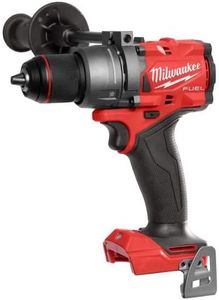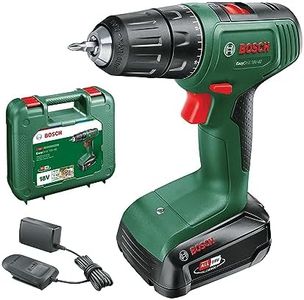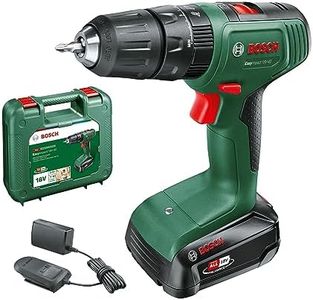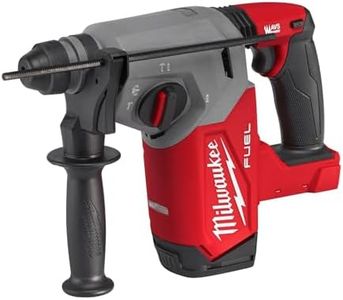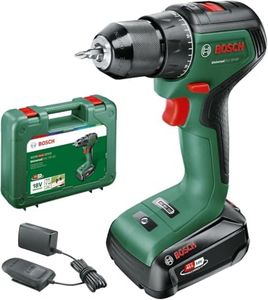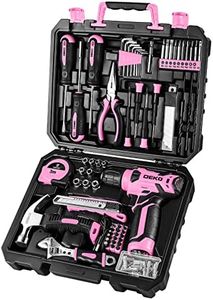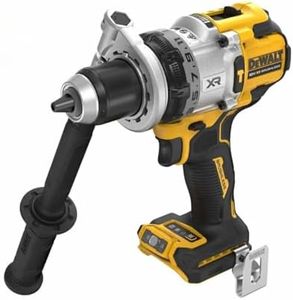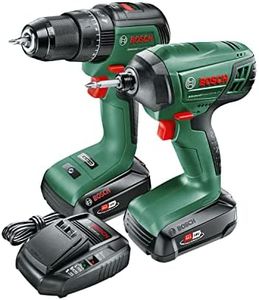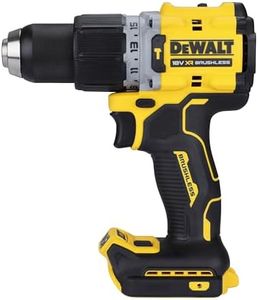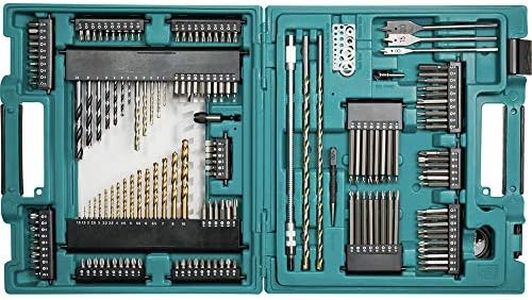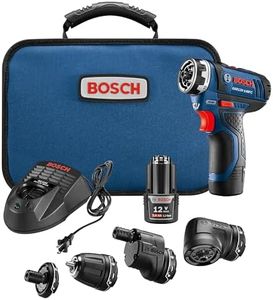We Use CookiesWe use cookies to enhance the security, performance,
functionality and for analytical and promotional activities. By continuing to browse this site you
are agreeing to our privacy policy
10 Best Drills For Women
From leading brands and best sellers available on the web.Buying Guide for the Best Drills For Women
When choosing a drill, it's important to focus on your needs and comfort, rather than labels like 'for women' or 'for men.' Drills come in various shapes, sizes, and weights, making it essential to find a tool that feels good in your hand and suits the type of projects you want to tackle, whether that's hanging pictures, assembling furniture, or heavier-duty work like drilling into masonry. The best drill for you will be one you can use confidently and comfortably, with the right features for your intended tasks.Weight and ErgonomicsWeight and ergonomics refer to how heavy the drill feels and how comfortable it is to hold and use. A lighter, well-balanced drill is easier to handle and reduces fatigue, especially for smaller hands or for people new to using power tools. Heavier drills might have more power, but can be tiring to use for long periods. Try to find a drill that's light enough for you to control easily, with a comfortable grip and layout of buttons and triggers.
Power Type (Corded vs. Cordless)Drills come in two main types: corded, which need to be plugged into a wall, and cordless, which use rechargeable batteries. Cordless drills are more portable and convenient, letting you move freely around your project. Corded drills tend to be lighter since they don’t have a battery, and they deliver constant power, but you need to be near an outlet. If you mostly do projects around the house away from outlets, cordless is usually the more flexible choice; if you want long sessions without worrying about battery life, a corded one might be better.
Voltage (for Cordless Drills)Voltage indicates the power and strength of a cordless drill. Lower voltages like 12V are great for light work such as assembling furniture or drilling small holes in wood. Higher voltages like 18V or 20V are more powerful, handling tougher materials and bigger tasks, but they make the drill heavier. Think about what kinds of jobs you’ll do most: if it’s lightweight household tasks, lower voltage should suffice. If you anticipate drilling into harder materials frequently, look for higher voltage.
Chuck SizeThe chuck is the part of the drill that holds the bit. Common sizes are 3/8 inch and 1/2 inch. A 3/8-inch chuck is common for general home use and can handle most bits for DIY projects. A 1/2-inch chuck holds larger bits for heavier work. For most household tasks and occasional DIY, 3/8-inch is versatile and keeps the drill lighter and easier to handle.
Speed and Torque SettingsDrills often have variable speed and torque (twisting force) settings. Multiple speed settings help you match the power to your task: slower speeds for screwing, higher speeds for drilling. Torque control is useful for driving screws carefully without stripping them. For new users or those taking on a mix of jobs, having adjustable speeds and torque is a helpful safety and convenience feature.
Additional Features (LED Light, Keyless Chuck, etc.)Modern drills may come with features like built-in LED lights to brighten your workspace, a keyless chuck for easy bit changes, or a compact design for better access in tight spaces. LED lights help when working in dim corners, and keyless chucks make switching bits much quicker. Decide which features would genuinely make your projects easier and more comfortable; if you often work in closets or at night, an LED might be essential, while everyone can benefit from a keyless chuck.
